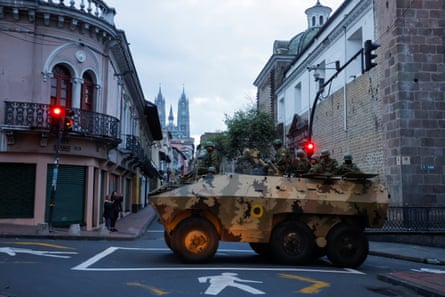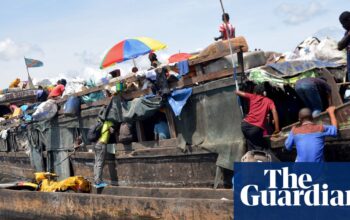Many Ecuadorians were unprepared for the rapid and drastic decline in their country’s security. The prevalence of murder and violence connected to drug trafficking has significantly increased, making Ecuador one of the most perilous nations in Latin America.
A short time ago, Ecuador was a peaceful area situated between the two primary producers of cocaine in the world, Colombia and Peru. These countries have experienced their own internal conflicts involving law enforcement and rebels associated with the profitable drugs industry.
Ecuador’s president, Daniel Noboa, has declared a state of “internal armed conflict” due to a rise in violence. He has labeled 20 drug trafficking gangs as terrorist organizations and granted the military the power to eliminate these criminal factions within the limits of international humanitarian law.
The news came as Ecuador was thrown into turmoil and violence following the escape of Adolfo Macías, also known as Fito, who is the leader of a notorious gang and a drug trafficker. After President Noboa declared a state of emergency, criminals carried out a series of assaults both in and outside of prisons, resulting in the deaths of police officers and prison guards. During a live broadcast, armed gang members even invaded a TV station.
Ecuadorians are filled with fear. In the recent past, Ecuador was more renowned for its volcanoes, diverse flora and fauna, and as a favored destination for elderly Americans seeking a comfortable lifestyle at a lower cost of living.
Fernando Carrión, a security specialist at the Latin American Social Sciences Institute in Quito, expressed surprise at the situation, stating, “This is unprecedented. We have always prided ourselves on being a peaceful nation. However, we were aware of the potential for this.”
According to Carrión, the South American country had a rate of five violent deaths per 100,000 inhabitants in 2017. However, he now claims that this number has risen to 46, making 2023 the most violent year in Ecuador’s history. Police records show that there were at least 7,592 violent deaths in 2023, which is significantly higher than the 4,426 deaths recorded in the previous year.
The recent surge of aggression can be attributed to the escape from prison of not only Macías, but also another gang leader named Fabricio Colón. Colón, who belongs to the Los Lobos gang, managed to break out during the disturbances on Monday evening. The prosecutor’s office has connected Colón to the murder of presidential candidate Fernando Villavicencio last year, as well as making death threats towards attorney general Diana Salazar.
According to Carrión, organized crime has never had such a strong presence in the halls of authority. As the new president tries to disrupt their hold on prisons by implementing measures such as militarization, longer sentences, and isolating influential leaders like those who recently escaped, multiple gangs are pushing back against his strict tactics.

Last week, Noboa pledged to follow the lead of El Salvador’s president, Nayib Bukele, and construct two maximum security prisons using the same company and design as those built by the popular leader.
Due to financial difficulties, threats of extortion, and the constant fear of becoming a victim of violence, a large number of Ecuadoreans have opted to leave their country. Many have taken the dangerous route through the Darién Gap, located between Colombia and Panama, risking everything in hopes of a better life. According to Panama’s migration agency, this has made Ecuadoreans the second largest group, after Venezuelans, to make this journey.
According to Renato Rivera from the Ecuadorian Observatory on Organised Crime, Ecuador’s economy, which is connected to markets in Asia and Europe but lacks proper security measures in its ports, has turned it into a center for global cocaine trafficking. General Pablo Ramírez, the former police anti-narcotics director, states that Ecuador exports approximately 1 million containers annually, with 75% of them being bananas. This trade serves as an ideal disguise for drug shipments.
A significant portion of the increase in violence in Ecuador can be attributed to the rivalry between various local criminal organizations. These gangs have adopted extreme and violent tactics from their supporters, the competing Mexican drug cartels Sinaloa and Jalisco New Generation.
The criminal groups also engage in transactions with Balkan traffickers, who dominate the profitable European market that has surpassed the United States as the primary location for cocaine. These competing factions have adopted tactics of urban warfare from former Colombian guerrilla organizations, which, as stated by security analysts, have expanded their drug and criminal enterprises into nearby nations following the 2016 peace agreement in Colombia.
Currently, those violent strategies are now being used against a mutual foe – the government of Ecuador.
Source: theguardian.com


